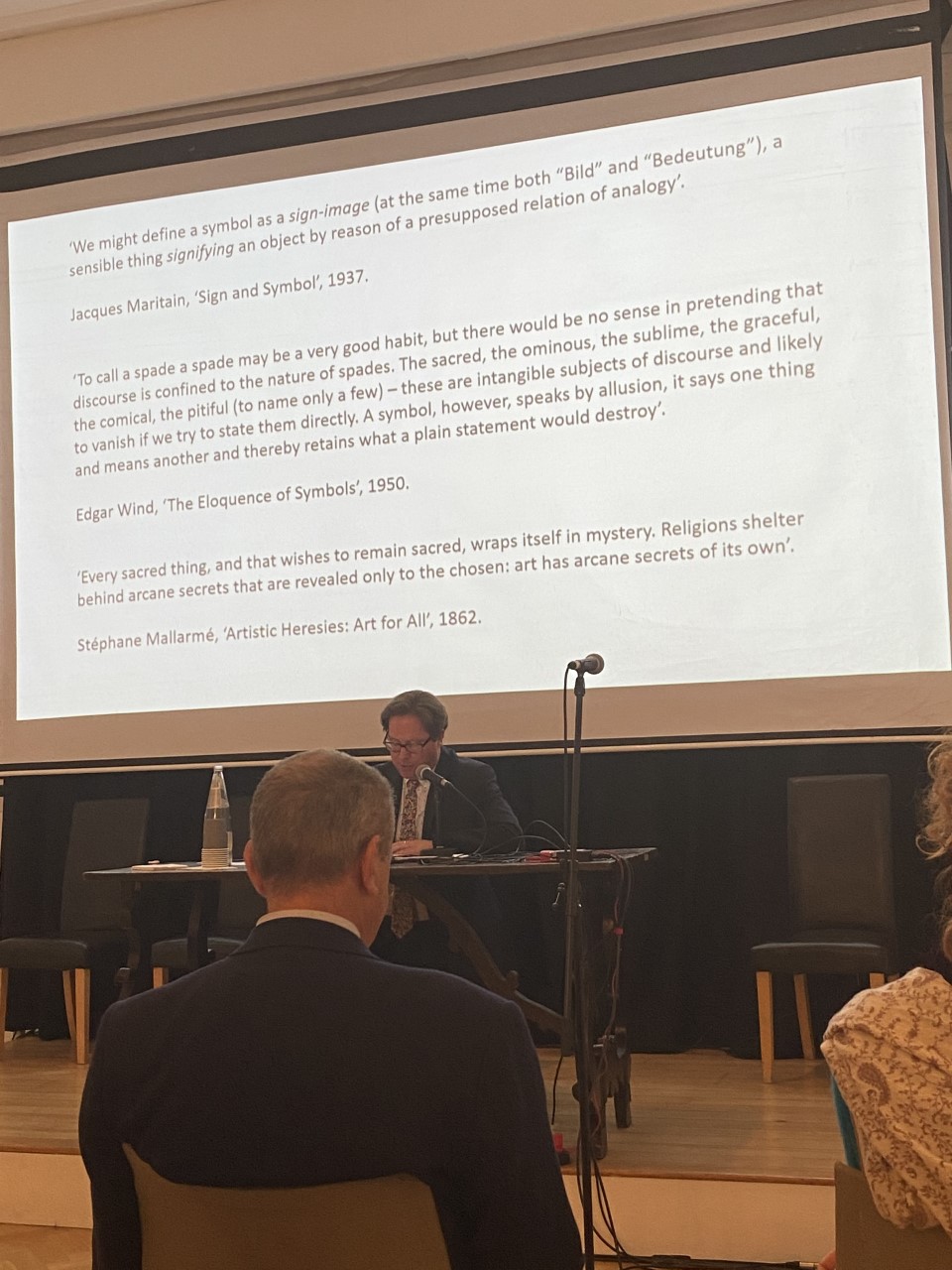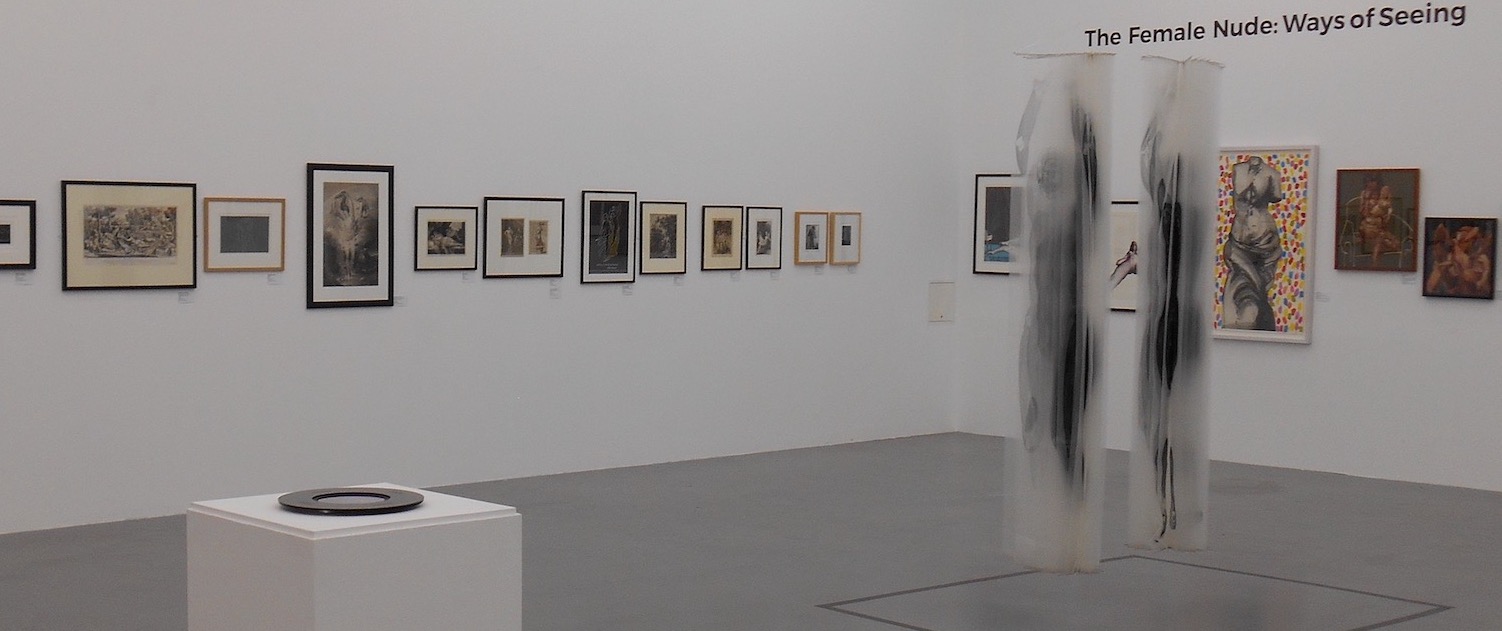
The conference Edgar Wind: Art and Embodiment took place at the Italian Cultural Institute in London on 28-29 October 2021. It commemorated the 50th anniversary of the death of the art historian and philosopher Edgar Wind, and provided an opportunity to take stock of the growing field of Wind studies. The conference was organised by Bernardino Branca and Ben Thomas of the University of Kent in collaboration with the Italian Cultural Institute in London, and with the support of the Warburg Institute of the University of London.
The conference was introduced by Katia Pizzi, Director of the Italian Cultural Institute, and Claudia Wedepohl, the Archivist of the Warburg Institute, who spoke briefly about Wind’s role in negotiating the transfer of the Warburg Library and Institute to London in the 1930s. The first session was dedicated to Wind’s work on the Italian Renaissance and was chaired by Oliver O’Donnell (Warburg Institute). The first paper was given by Professor Jaynie Anderson (University of Melbourne), the editor of two major collections of Wind’s papers (The Eloquence of Symbols and Hume and the Heroic Portrait), who analysed Wind’s iconographical interpretation of Giovanni Bellini’s Feast of the Gods and the controversy surrounding it. Then Professor Maurizio Ghelardi (Scuola Normale Superiore, Pisa) discussed Wind’s relationship with Jacob Burckhardt’s fundamental interpretation of the Renaissance. Finally, Bernardino Branca (University of Kent) gave an interpretation of a significant letter sent by Wind to Frances Yates in 1938 concerning Giordano Bruno.
The second session, chaired by Ben Thomas, shifted the focus to Wind’s various iconographical interpretations of art works. Giovanna Targia (University of Zurich and the Kunsthistorisches Institut im Florenz) traced some points of connection between Wind and Heinrich Wölfflin, while Oliver O’Donnell tracked Wind’s research trips in England during the early 1930s for his classic study of eighteenth-century art Hume and the Heroic Portrait. Professor Elizabeth Sears (University of Michigan), editor of The Religious Symbolism of Michelangelo, then explored the theme of the ‘encyclopaedic imagination’ in Wind’s research and also in his pedagogy, notably during his period at the University of Chicago during the Second World War.
The third session, chaired by Claudia Wedepohl, continued the discussion of iconography and consisted of a paper by Fabio Tononi (Warburg Institute) on Wind and Aby Warburg’s understanding of the concept of ‘Kulturwissenschaft’, and a study of Wind’s interpretation of Albrecht Dürer’s Melencolia I print by Franz Engel (Humboldt University) as ‘chaos reduced to cosmos’. Excitingly, Engel presented a newly discovered letter by Wind to Fritz Saxl from 1938 concerning the interpretative debate around Dürer’s engraving.
The fourth session, chaired by Fabio Tononi, focused on Wind’s relationship with Aby Warburg and the Warburg Institute. Robert Pawlik (University of Warsaw) used the test case of Botticelli’s Primavera to distinguish Wind’s interpretative approach from Warburg’s, while also bringing Walter Pater into play. Next, Professor Monica Centanni (IUAV, Venice), presented her archival findings on the developing rift between Wind and Gertrud Bing of the Warburg Institute as charted through their correspondence.
The fifth session, chaired by Martina Mazzotta (Warburg Institute), explored Wind’s little-known interest in modern and contemporary art. Iannick Takaes (Columbia University) discussed Wind’s critique of humourless modern art and drew attention to the playful intelligence at work in his work. Ben Thomas (University of Kent) surveyed the importance of Stéphane Mallarmé’s concept of ‘the mystery that constitutes the symbol’ for Wind’s interpretation of modern art as defined by the ‘heritage of Baudelaire’.
The sixth and final session, chaired by Bernardino Branca, focused on Wind’s philosophical work, notably the notion of ‘embodiment’ developed in his Experiment and Metaphysics. Tullio Viola (Maastricht University) examined the exchange between Wind and Ernst Cassirer on transcendental and naturalistic approaches to culture and memory. Sascha Freyberg (Università Ca’Foscari, Venice) discussed Wind’s approach to basic concepts and the logic of time. Finally, Professor Bernhard Buschendorf discussed Wind’s concept of embodiment and its significance for a Warburgian understanding of the symbol.
The conference ended with some personal reflections on Wind from one of his last students Professor Adrian Rifkin, and about Wind’s Belsyre Court flat and his art collection from the curator Colin Harrison (Ashmolean Museum).
Further scholarship on Edgar Wind can be found at The Edgar Wind Journal, edited by Bernardino Branca and Fabion Tononi.
